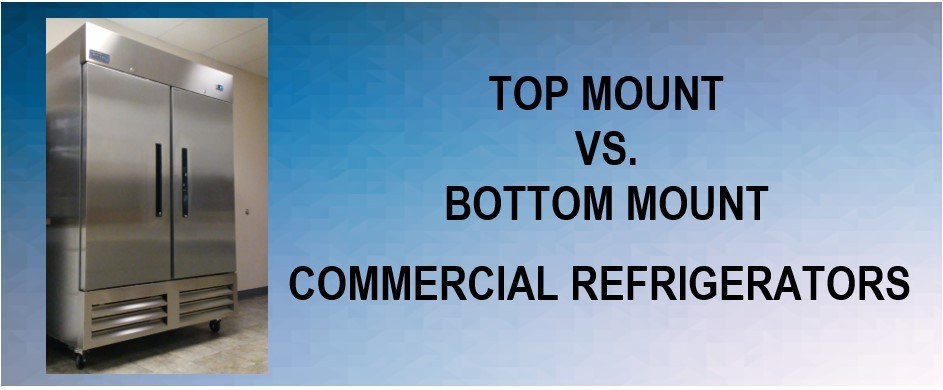COMPARING TOP MOUNTED VS BOTTOM MOUNTED COMMERCIAL REFRIGERATORS
When it comes to selecting the perfect commercial refrigerator for your kitchen, the process can seem overwhelming due to the vast array of brands and models available. While factors like size, material, and cost are relatively straightforward to consider, choosing between a top-mounted or bottom-mounted compressor can be a bit trickier. Each option offers its own set of advantages and challenges, which we'll explore below to help you make an informed decision.
To assist you in making the right choice for your establishment, here are some key points to keep in mind when comparing top-mounted versus bottom-mounted commercial refrigerators:
Top-Mount Commercial Refrigerators - Pros:
Temperature Control – Since compressors generate heat, placing them at the top ensures that this excess heat is released outside the unit instead of accumulating inside the fridge.
Easier Maintenance – With the compressor located above the ground level, dust and debris are less likely to enter the system, reducing the frequency of necessary cleanings.
Space Efficiency – Top-mounted units provide more internal storage space since there's no need for additional room to house refrigerant lines or insulation above the condenser.
Accessibility – For those who prefer keeping their floors clear of equipment, top-mounted units offer a practical solution without sacrificing functionality.
Top-Mount Commercial Refrigerators – Cons:
Frequent Servicing Needs – Due to their position, top-mounted units are more susceptible to drawing in steam, grease, and other airborne particles, leading to clogged condenser coils that require regular attention.
Energy Consumption – Given that heat naturally rises, top-mounted units tend to operate less efficiently, especially in environments where there’s a significant temperature difference between the floor and ceiling.
Access Challenges – Because the compressor is positioned on top, accessing it for routine maintenance can be cumbersome and might even necessitate hiring multiple technicians for repairs, increasing operational costs.
Bottom-Mount Commercial Refrigerators - Pros:
User-Friendly Accessibility – These units place the compressor beneath the main storage area, allowing easy access for cleaning and maintenance without needing ladders or special tools.
Reduced Cleaning Requirements – Airborne contaminants like grease and steam are less likely to infiltrate the system, minimizing coil cleaning demands while enhancing overall efficiency.
Operational Efficiency – Operating closer to the cooler floor level, the condenser enjoys improved performance compared to being situated near warmer areas such as the ceiling.
Convenience for Lower Shelves – Elevated floors accommodate refrigeration components, making it simpler to retrieve items stored on lower shelves without bending down excessively.
Bottom-Mount Commercial Refrigerators – Cons:
Compromised Interior Capacity - Space is compromised by refrigerant lines running vertically along the rear wall and extra insulation placed overhead, resulting in reduced usable volume within the cabinet.
Increased Energy Usage – Heat generated by the mechanical parts can seep upwards into the fridge cavity, negatively impacting energy consumption levels required to sustain desired temperatures.
Potential Dirt Accumulation – Being closer to the floor, there's a greater risk of dirt and debris being sucked into the unit, demanding periodic coil cleanings to maintain optimal functionality.
Ultimately, choosing between a top-mounted or bottom-mounted commercial refrigerator depends largely on specific kitchen conditions and operational requirements. If your kitchen boasts ample headroom, vertical temperature variations might not pose much of an issue. However, if your workspace features heavy cooking activity generating steam and grease, opting for a top-mounted model could prove beneficial. Conversely, bakeries or similar settings prone to airborne particulates should steer clear of bottom-mounted options. Should you have further queries regarding this topic, don't hesitate to reach out to us at 866-613-2617; our friendly support staff would love to guide you through every step of the selection process.
